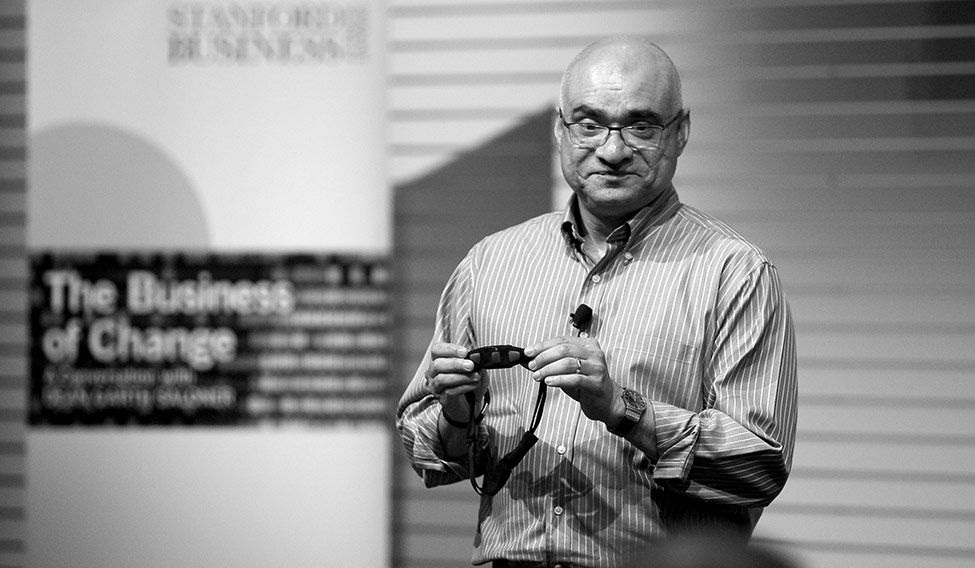In the 2015 biopic The Man Who Knew Infinity, actor Dev Patel plays the role of Indian pioneering mathematician Srinivasa Ramanujan. Despite growing up poor in Madras in the early years of the 20th century, Ramanujan’s exceptional talent for numbers leads to his admission into Cambridge University in England, then considered one of the most innovative academic institutions in the world.
But that was a century ago. Fast forward one hundred years and we have a new global leader in science, engineering and technological research: the United States.
Anyone with exceptional talent in the sciences, coupled with the ambition required to go the distance, will generally gravitate towards places where the most opportunities exist. While India’s education system continues to produce a disproportionately high number of intellectually-gifted young men and women, it still lacks the requisite infrastructure and funding opportunities needed to allow an indigenous research community to develop beyond a certain point.
That is why so many are making names for themselves in the laboratories and research centres located across America.
From the youngest doctor in history (Balamurali Ambati) to the ‘Father of Fibre Optics’ (Narinder Singh Kapany), contemporary Indian scientific output in the US has been wide reaching and hugely beneficial. Research in key areas like medicine, materials science, autonomous vehicle technology, psychology and smart city design is being spearheaded by Indian men and women located in labs in every corner of the world’s leading superpower.
AREAS OF RESEARCH
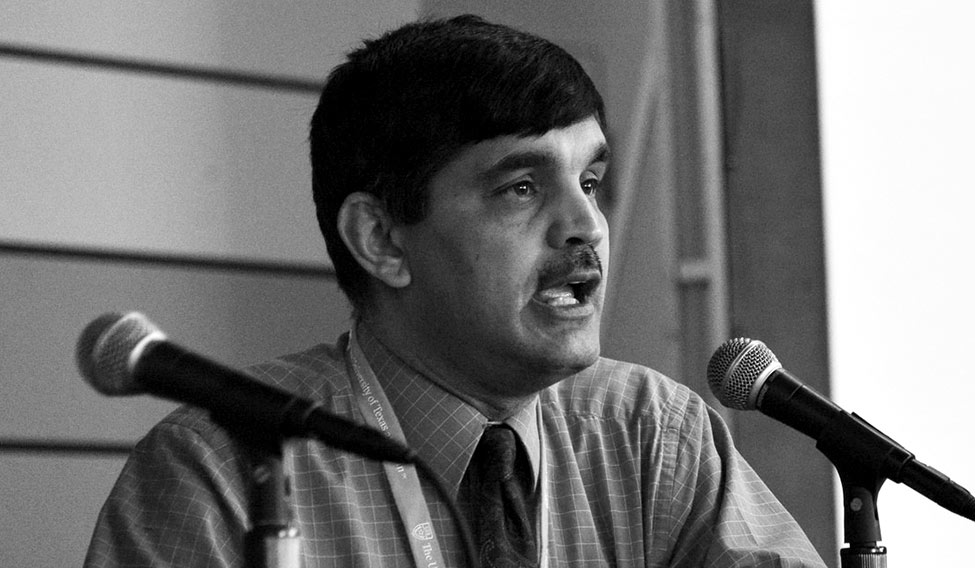 Dr Chandra Bhat
Dr Chandra Bhat
The current areas Indians find themselves engaging in isn’t substantively different from what you find in general. Talented people are generally able to apply their skills in a variety of areas.
This wasn’t always the case. “Historically, those that came to the US went into scientific and engineering-based fields, principally because of the social values which were hammered into every young Indian boy and girl growing up,” explains Jayant Sabnis, senior lecturer at Massachusetts Institute of Technology’s (MIT) department of aeronautics and astronautics. “If you wanted a reasonable standard of living, engineering or medicine were considered the best options. Back then, business wasn’t considered as viable a career path and so was not encouraged.”
All that has changed in recent decades and India’s entrepreneurial flair is stronger than ever. And it is its strength in these two key areas—science and enterprise—which has provided the foundation for Indian research output in the US to become so formidable in America’s current research culture.
THE IMPORTANCE OF CONVERGENCE
 Prof Kripa Varanasi
Prof Kripa Varanasi
As stated, India is producing a large number of high quality graduates who are choosing to go west, and not just in the sciences. This trend is particularly acute among Indian graduates of business, management and economics.
This is a key point. Although our focus here is on scientific innovation, the global research community is currently experiencing a paradigm shift in terms of how it investigates the world around us.
Traditional lines dividing subjects like commerce, the humanities, science and engineering no longer exist. “In the past, the sciences—biology, chemistry and physics—existed in silos,” explains Prof Lokesh Joshi, a bioanalytical scientist who spent six years at Cornell University in New York before moving to Arizona State University. “As the global research community becomes ever more focused on finding solutions to real world problems—rather than engaging in abstract research for the sake of it—interdisciplinary collaboration has become the new norm.”
Now engineers have found a place for themselves in medicine, while data scientists are working alongside entrepreneurs and economists—a phenomenon which has proven very popular among India’s brightest and best. “India is a booming economy with a lot happening in the private sector,” says Joshi, who is currently vice president of research at the National University of Ireland in Galway. “Many of our more entrepreneurial-inclined citizens are travelling to the US to gain experience in economics and management and then returning home to apply that experience in burgeoning local industries like medtech, telecommunications and software engineering.”
NEUROECONOMICS
Prof Baba Shiv works in one of the newest, most exciting disciplines to emerge out of this new culture of cross collaboration: neuroeconomics. He is currently professor of marketing at Stanford, the university credited for helping establish the foundations for the growth of Silicon Valley, the world’s leading tech hub.
Originally from Tamil Nadu, Shiv came to Stanford in 2005 where his expertise in science and business first began converging. “Much of my research is focused on the brain, particularly human emotional responses and their role in shaping decisions and experiences,” he says. “It includes applying neuroeconomics to the study of innovation and entrepreneurial leadership. Stanford has been at the heart of Silicon Valley’s success in the tech sector, so I work with everyone, from small startups to Fortune 500 companies, across the globe in countries including India, Malaysia and New Zealand.”
SELF-DRIVING CARS
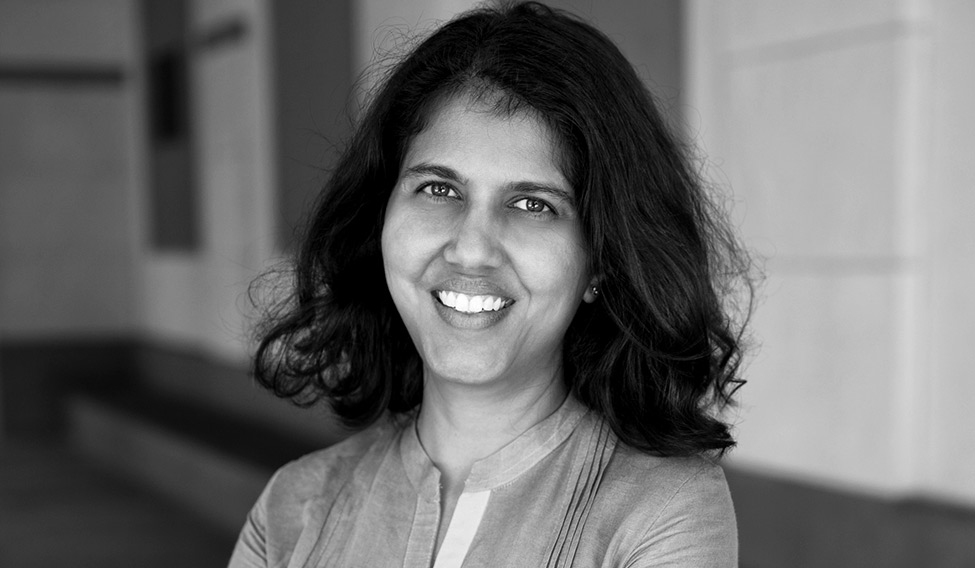 Maninder ‘Mini’ Kahlon
Maninder ‘Mini’ Kahlon
Born in Madras in 1964, Dr Chandra Bhat began his scientific path studying at the Indian Institute of Technology Madras, where his father was a professor of electrical and communications engineering. He now heads the Center for Transportation Research at the University of Texas at Austin.
“Under my leadership, the Center for Transportation Research was named a US Department of Transportation Data-Supported Transportation Operations and Planning (D-STOP) Center,” he tells THE WEEK. “Our primary focus is on all of the technology and wireless infrastructure needed for the coming age of autonomous/connected vehicles.”
Safety and communications are two of his main concerns. “When it comes to driverless cars, there are three legs to the stool—technology, infrastructure and human behaviour. People make bad decisions when driving, like attempting risky overtaking manoeuvres on narrow, rural roads. We are looking at how vehicles might be able to communicate with each other to minimise the negative impact of poor human choices.”
The connection between human behaviour and transportation is what originally attracted Bhat to this branch of engineering. In civil engineering, you have a number of subsections, he says. “I like the transportation section because it is interdisciplinary and, ultimately, your focus is on people. Every day people commute. It is an area which is very closely tied up with the wellbeing of society. That social humanities element is what drew me to it in the first place.”
COMMERCIALISING SCIENCE
While the trend towards solving real world problems is helping address many of the challenges currently faced by the global community—climate change, world hunger and educational standards—it is in no small part driven by a growing commercialisation in areas previously considered off limits by the business community. These days, there is plenty of money to be made in science, engineering and health care.
ENTERPRISING ENGINEERS
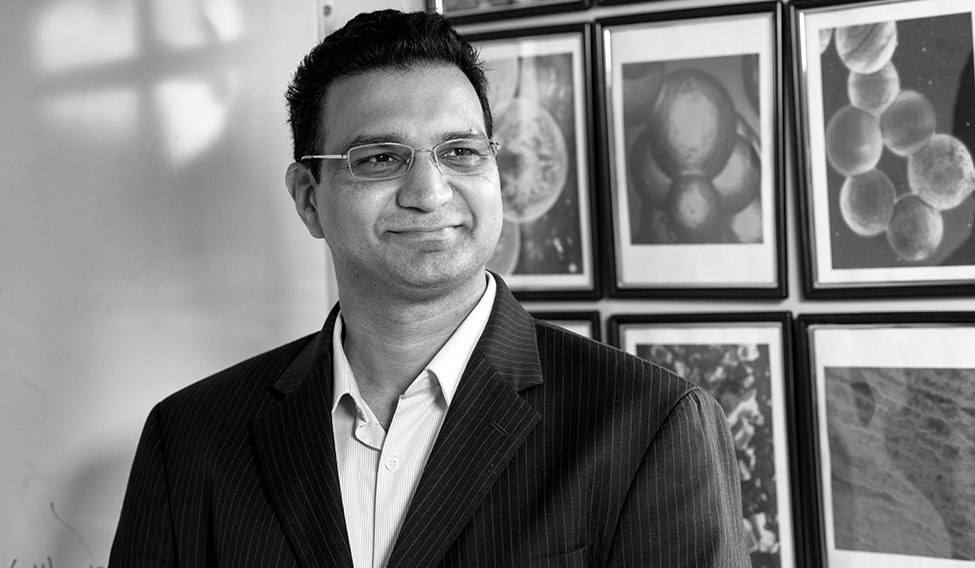 Prof Vilas Pol
Prof Vilas Pol
“I was born in 1977 in Hyderabad to parents who were both science teachers. So it was pretty clear what career path I would end up on,” laughs Prof Kripa Varanasi, associate professor, mechanical engineering, MIT. His sister, who also lives in the US now, is an engineer. The Varanasi family’s appetite for science didn’t start with his mother and father though. His grandparents, too, were science teachers.
While scientific inquiry was clearly encouraged at home, so too was entrepreneurship, particularly by Varanasi’s mother. “My mom was instrumental in driving my ambitions. She used to buy me amazing electronics kits when I was a kid,” he says. “In 2004, I went to GE research labs where I remained for five years. I developed an even greater appreciation for solving real world problems there, and what it takes to translate theoretical research into useful products. Now I am back at MIT, only this time as a professor, but have had the opportunity to commercialise my research.”
The boundary between two types of matter—solid and liquid—has piqued Varanasi’s interest for long. He cites the example of honey and its container. “The honey and the container share an interface. The same goes for ice sticking to surfaces or the way steam condenses,” he says. “All of these things happen at an interface between solid and liquid, liquid and gas, and so on.”
To continue with the honey example, some of the sticky substance is always wasted because it remains stuck to its container. So Varanasi decided to explore potential solutions to all this wasted material—from honey to more valuable commodities like oil.
“I have developed a nano-coating technology that changes the boundary conditions between solid and liquid and eliminates any waste,” he says. “When we first launched the product on the commercial market back in 2012, my phone didn’t stop ringing for three months. Literally thousands of companies wanted it—from paint and toothpaste manufacturers to agrochemical and energy producers. It has been very successful.”
THE FUTURE OF HEALTH CARE
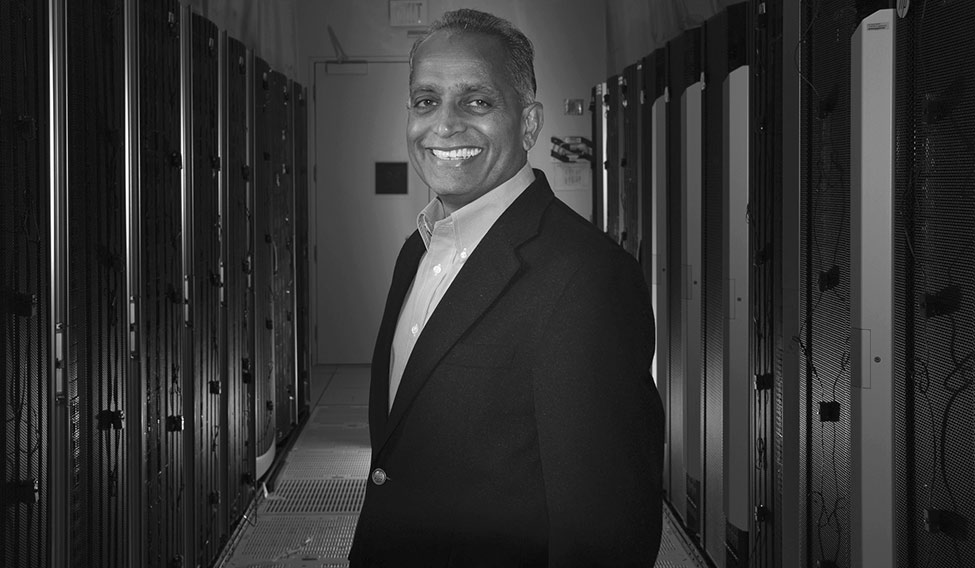 Chandrakant Patel
Chandrakant Patel
At Dell Medical School in Austin, Texas, Kolkata-born Maninder ‘Mini’ Kahlon and her team are formulating strategy at a medical centre that aims to rewrite the rulebook on health care. The clue is in the name. Michael Dell, founder and CEO of Dell Computers, is harnessing the massive amount of data his company has gathered and is attempting to apply it in medicine. But the owner of one of the largest tech companies on the planet isn’t doing so simply for the good of his health (pun intended). Medtech is one of the fastest growing industries in the global economy right now. It is also no coincidence he has recruited someone with the kind of experience as Kahlon, whose career, spanning almost three decades, has led her into diverse fields of business, tech, non-profit and health care.
“After completing my studies in physics and neurobiology at Bryn Mawr College, I spent six years working in Silicon Valley for a number of tech startups,” says Kahlon, vice dean of strategy and partnerships, Dell Medical School. She is also the founding co-chair of the Austin Healthcare Council. “But life there didn’t feed my soul. So, I left and worked for a non-profit, helping children use science and tech to improve lives,” she tells THE WEEK. “Then I got a call to come help launch this enterprise at Dell Medical School. As a medic, it is a real privilege to be part of a once-in-a-lifetime opportunity. Dell Medical School is attempting to redefine our entire approach to academic medicine.”
How? The aim is to create a health ecosystem that encourages innovation from anywhere—be it entrepreneurial startups or totally new collaborators who want to redefine established conventions in academia and industry. The slow pace at which new drugs with potential to cure various diseases can get approved is a major problem for health care provision in the US. The Dell Medical School will advance collaborative programmes designed to quickly identify promising health research, thereby speeding up the time it takes for new drugs to get from the laboratory to the marketplace.
Michael Dell may see the commercial potential of this venture, but there is no shame in making money from research that ultimately leads to positive benefits for society. Just ask Vilas Pol, associate professor, Purdue University’s Davidson School of Chemical Engineering in Indiana, one of the most highly regarded, not to mention prolific, Indian scientists living in the US today. With two decades of research experience in the fields of energy storage, materials science, chemistry, engineering and electrochemistry, he has published countless academic papers, and developed various synthetic approaches for the fabrication of materials for batteries. His tireless drive to innovate resulted in an invitation to conduct research at the US Department of Energy’s Argonne National Laboratory in Illinois.
What’s currently keeping him occupied? Up-cycling. “Everybody is trying to make new types of green plastics,” he tells THE WEEK. “I am trying to get rid of them, but not by conventional recycling. It has been proven that current recycling processes are not efficient and around 10 per cent of “recyclable” waste is actually reused. I ‘up-cycle’. By this I mean taking something valueless and making it valuable. For example, I am currently turning plastic bags into a carbon material that can be used in the application of energy storage for batteries.”
MAKING CITIES SMARTER
India is one country that understands the challenges posed by rapid population growth in urban centres. Rising birth rates, coupled with the growing number of people opting to live in cities over rural areas, have resulted in many cities struggling to keep up with rising demand for basic services like electricity, clean water provision and adequate waste management. While in many cases, urban infrastructures were never designed to cater for population growth on such a massive scale, much of the shortfall in basic services is down to inefficient and outdated service provision. These are the kinds of macro scale problems that keep Chandrakant Patel, chief engineer at Hewlett-Packard, up at night.
Elected to the Silicon Valley Engineering Hall of Fame in 2014, Patel has been granted a staggering 148 patents in his career. He has been responsible for delivering innovation in chips, systems, data centres, storage, networking and has pioneered breakthroughs in thermal and energy management in data centres. With so much experience, Patel is uniquely positioned to apply his skills on the largest of scales. “I am trying to find solutions to manage resources at the scale of cities,” he tells THE WEEK. “At HP we are trying to design ‘smart cities’ that run more efficiently, are less wasteful and provide just enough resources to meet demand.”
AFTER DOING MY early schooling, I went to Chennai to study mechanical engineering. Despite graduating at the top of all my classes in engineering, I decided to go into sales straight after college.
This came as a shock to my professors. Most of my peers were going to the US to get their PhDs. But I was an extremely shy person and I decided the only way to get rid of that shyness was to do sales. I first got a job selling construction equipment, but I have also sold luggage, furniture, even Barbie dolls!
This sales experience not only gave me more confidence but also fed into my research interests now, pioneering the study of neuroeconomics at Berkeley.
PROF BABA SHIV, neuroeconomist and professor of marketing, Stanford University Born in Tamil Nadu
MY DAD WAS a professor of electrical and communications engineering at the Indian Institute of Technology Madras. While I always knew I would study engineering [I graduated with a bachelor’s degree in civil engineering in 1985 from IIT-Madras], to be perfectly honest I had absolutely no idea what I wanted to do, even at that point. This is something I tell all my students, as well as my own children: It is OK to be unsure.
There is no need to rush into anything
DR CHANDRA BHAT, director at the Center for Transportation Research and professor in Transportation Engineering at the University of Texas, Austin.
Born in Chennai, 1964
I WENT TO DO my undergraduate degree in mechanical engineering at IIT Madras. It was there I gained not only an understanding of the fundamentals of engineering, but also the confidence and belief that I could do anything. It was a great place. Students there are encouraged by their peers to pursue their dreams.
When I came to the US in 1998, I got accepted into my dream school, MIT. During the time I was doing my PhD, there was a major shift in the way science was being taught and thought about. Suddenly there was a lot more emphasis on asking not just ‘why?’ but also ‘why not?’. This stems from the entrepreneurial spirit that exists only in the US.
PROF KRIPA VARANASI, associate professor, mechanical engineering, MIT
Born in 1977
IN SCHOOL, I WAS an all-rounder. I loved debating, theatre and poetry, but also science, especially physics and maths.
I could have done anything, but ever since I was 10 years old I had dreamed of living in America. I had the idea that the US celebrated what everyone could be and wouldn’t force me to conform. India wasn’t going to let me do that, but I knew I needed to get a scholarship to an American college in order to get there. So I spent most of my teenage years making sure I got that scholarship, not to mention making sure my parents would support my wish.
While studying physics and neurobiology at Bryn Mawr College, I also did a lot of performance art in theatre, and spent summers in New York City working off Broadway. It was a magical time.
MANINDER ‘MINI’ KAHLON, vice dean of strategy and partnerships for Dell Medical School, Austin, Texas and founding co-chair of the Austin Healthcare Council Born in Kolkata, 1969
I CAN’T SAY for sure what inspired me to become a scientist, but I had a natural interest in science from a very early age. I didn’t know what I was doing at the time but I frequently took light bulbs from lamps in my family home and studied them, taking them apart. When I discovered I could make them explode, not knowing there was a gas inside, I was hooked! But I never realised that it was chemistry I was doing. To me it was just playing.
When I graduated from Pune University in 1999, I wanted to do a PhD in nanotechnology but that particular branch of science wasn’t all that developed yet in India. The US provides the most opportunities to those who excel in their field, whatever that may be.
PROF VILAS POL, Purdue University Davidson School of Chemical Engineering, Indiana
Born in Pune, 1974
UNLIKE MANY INDIANS coming to the US, I came as an immigrant straight out of high school. I was 18 years old and arrived in San Francisco in 1978 with only $10 in my pocket.
It wasn’t easy. I lived in a rough neighbourhood and worked as a dishwasher to support myself. I even sold encyclopaedias door to door for a while. I never got any loans or grants. But I knew I wanted to go to college.
I had to prove myself all over again though in subjects like calculus, physics and English. But this wasn’t difficult. I got all As.
I owe my success to India’s secondary education system. My teachers focused on the fundamentals and it prepared me well. I consider those years in middle and high school to be the most important foundations for my career. I was always ambitious and knew I was smart enough to go far if the right opportunities came my way. But, like I said, India prepared me and for that I am very grateful.
CHANDRAKANT PATEL, chief engineer at HP
Born in 1960



